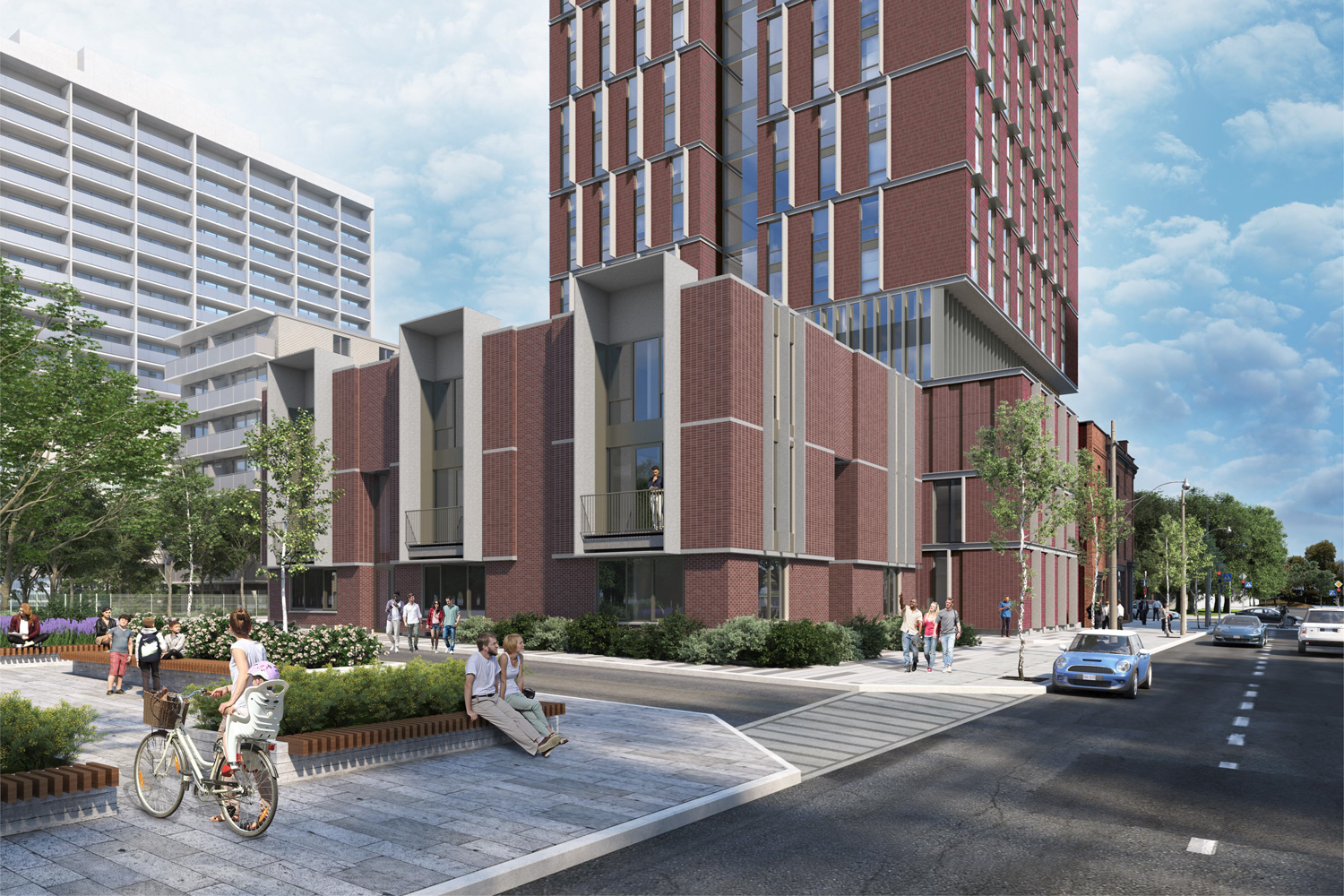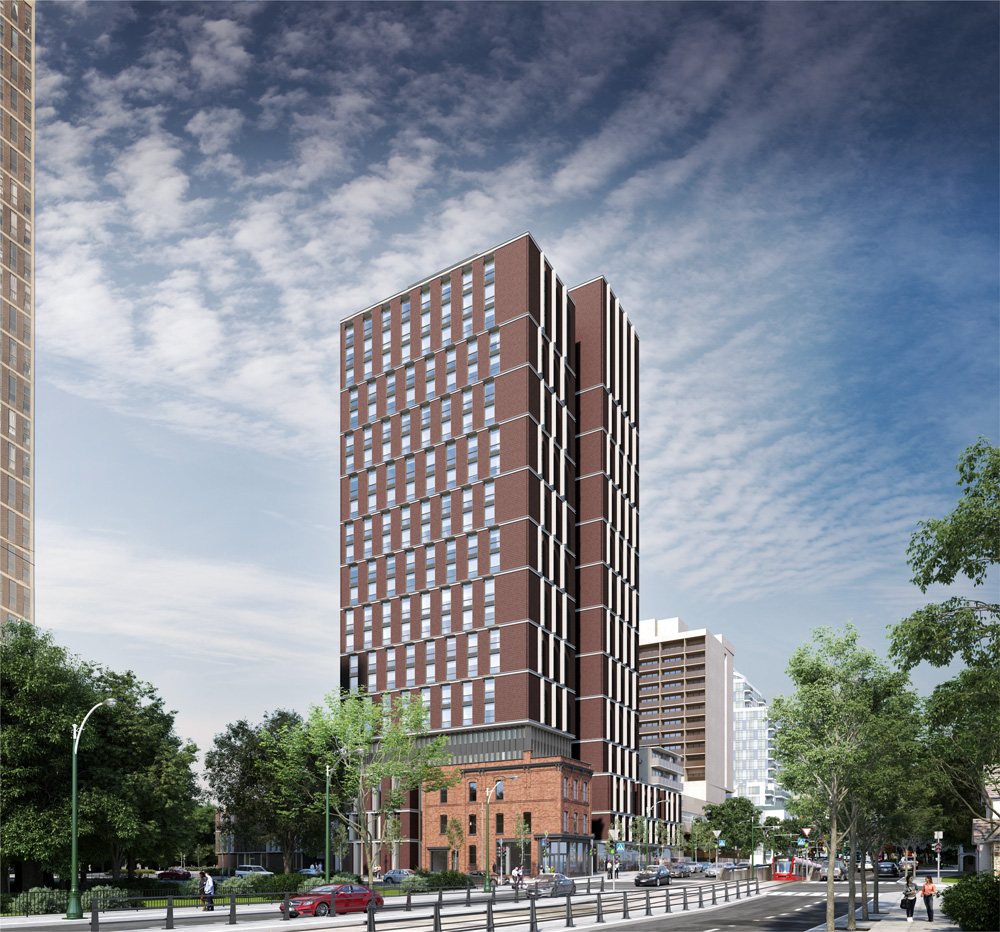The University of Toronto is making tremendous progress on the construction of its new and sustainable student residence at the northwest corner of Spadina and Sussex Avenues.
Facing a housing crunch, the University of Toronto reached an agreement with the City of Toronto and local community groups, allowing it to build a much-needed, new 23-storey student residence at the corner of Spadina and Sussex Avenues. The new residence building will house 508 students, provide student amenity space, townhouses for faculty, and retail space along Spadina Avenue. It will enable more students to live where they study and socialize-right in the heart of downtown Toronto and will be the most sustainable residence ever built by the University.
Scott Mabury, U of T’s vice-president, for Operations and Real Estate Partnerships, says that the Spadina-Sussex Student Residence will advance the academic mission of the university while simultaneously providing quality housing, innovative space and retail opportunities to the community. The Daniels Corporation – the socially conscious developer that led the redevelopment of Regent Park with Toronto Community Housing-is U of T’s partner on the Spadina-Sussex residence.

The residence is due to open in the fall of 2024 with 508 beds. Crews are now well above ground and excitement about the project is building within the student community. Walking past the site, one can now completely visualize the final product of a fantastic idea and years of planning. The beautiful Robert Street parkette, adjacent to the building site, is already proving to be a neighbourhood favourite. The parkette was built in consultation with the neighbourhood association as part of the overall development plan.
U of T President Meric Gertler says that the new residence will do much more than meet a core need; it will also help realize University aspirations. In October 2021, President Gertler formally announced that the University would be divesting its financial portfolio from carbon-intensive sectors and firms and moving toward businesses that are leveraging the shift to green energy and carbon-conserving technologies. He also announced that U of T would be a “Climate Positive University”. This was a formal shift toward transforming U of T’s energy and utility infrastructure and adopting leading-edge building design and retrofits to reduce GHG emissions. He further committed to significantly expanding the University’s renewable energy generation both on and off campus.
“The growing severity of the climate crisis now demands bold actions that have both substantive and symbolic impact. When a large institution like the University of Toronto decides to take such steps, it is our belief that this will both accelerate the transition to a low-carbon economy and inspire other investors to do the same. We hope it will also encourage government actors at home and abroad to intensify their efforts to tackle the challenge of climate change,” said Gertler.
The Spadina Sussex Residence reflects the Climate Positive University policy, and an example of how buildings will now be designed to meet the University of Toronto’s goal of becoming a carbon-neutral campus.
“Make-up” air will be provided to the building by make-up air units located in the penthouse that utilize enthalpy wheels for heat recovery. Make-up air is designed to “make up” the air in your interior space that has been removed due to process exhaust fans. This type of HVAC solution pulls in fresh, tempered air from outside your building to replace existing air that cannot be recirculated. Heat pumps connected to the Robert Street geothermal field provide heating and cooling for the make-up air units, terminal units, and domestic hot water heating. This approach will eliminate the need to utilize natural gas in the building.

Owen McCartney, a Development Finance Analyst from Real Estate Partnerships says that in addition to its many student beds, the residence will have several units available to faculty. This is the first time a U of T residence has been designed to incorporate a faculty-student mix, with the goal of creating a micro community of students and faculty within the macro community of the campus. The residence will also contain some ancillary retail space that will be chosen according to how it best serves the University and Sussex-Harbord community.
Thankfully, the world is slowly but surely recovering from the pandemic, and a sense of vibrancy and renewal is returning to downtown Toronto. In keeping with the spirit of renewal, the University of Toronto remains committed to building innovative and sustainable living spaces such as the Spadina Sussex Residence. These spaces will remain an integral part of the university’s ongoing sustainability mission and will help build a healthy and sustainable future for our students and for the community.
